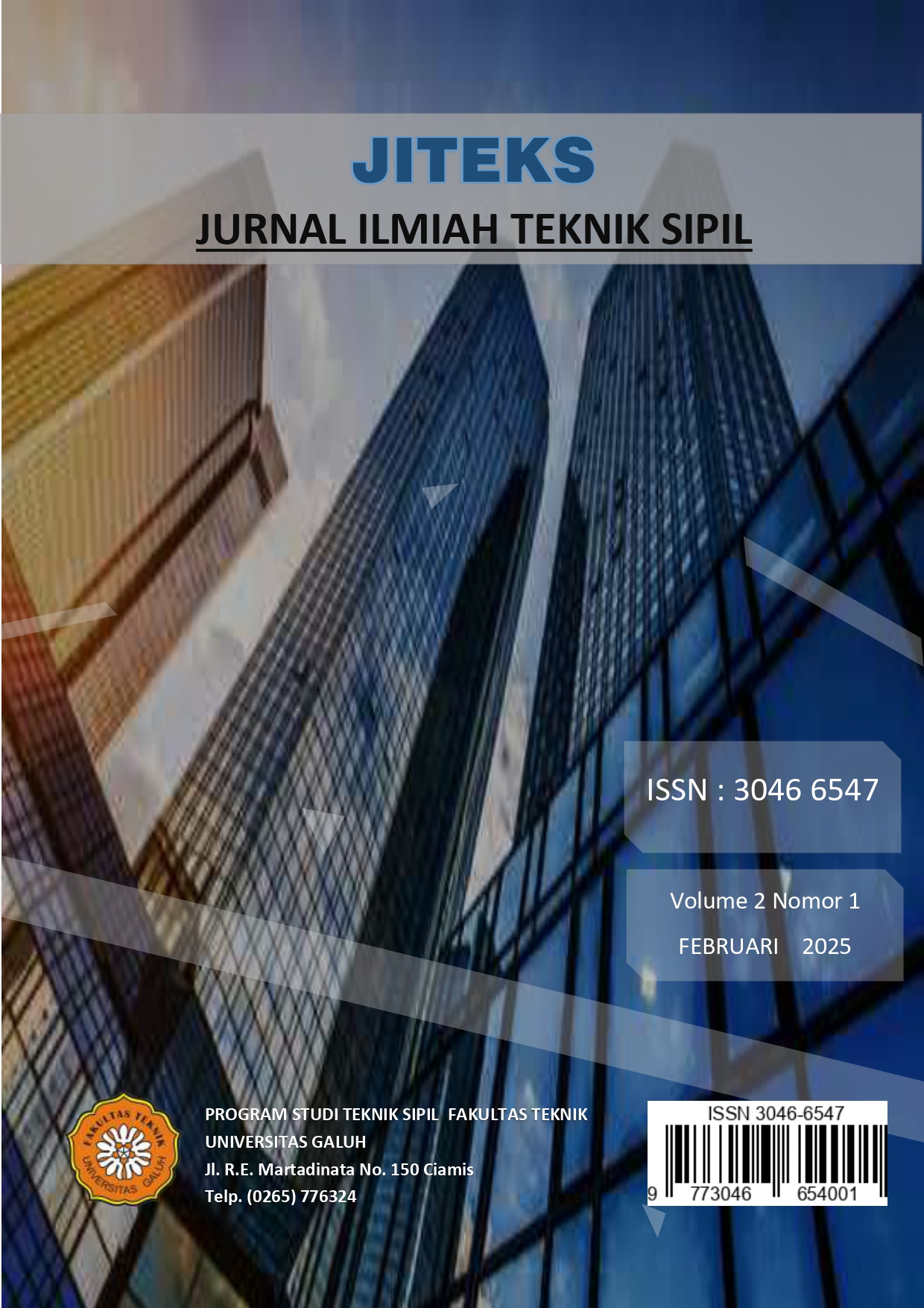PERBANDINGAN TEBAL LAPIS TAMBAH (OVERLAY) ANTARA METODE SNI 03-1732-1989-F DENGAN AASHTO 1993
(Studi Kasus : Ruas Jalan Letnan Harun Kota Tasikmalaya) STA 0.000 Sampai Dengan STA 2.032
DOI:
https://doi.org/10.25157/jiteks.v2i1.5119Kata Kunci:
SNI 03-1732-1989 F, AASHTOO 1993, Perkerasan Jalan Raya, OverlayAbstrak
In general, the pavement construction commonly used in Indonesia is flexible pavement. Flexible pavement is pavement that uses asphalt as a binding material consisting of layers placed on top of compacted subgrade. To design a pavement layer, especially flexible pavement, there are various methods such as the SNI 03-1732-1989 F method and the AASHTO 1993 method.
This research purpose to compare the results of flexible pavement thickness planning calculated using the SNI 03-1732-1989 F Method and the AASHTO 1993 Method. This research was conducted on a case study of the Lieutenant Harun road section in Tasikmalaya City. Secondary data consists of basic ground CBR data, deflection data, climate data and road pavement damage data, while primary data consists of average daily traffic data (LHR) and road type. The data obtained were analyzed using the SNI 03-1732-1989 Method and the 1993 AASHTO Method. This research aims to compare the results of flexible pavement thickness planning calculated using the SNI 03-1732-1989 F Method and the 1993 AASHTO Method. This research was conducted on a case study Jalan Lieutenant Harun, Tasikmalaya City. Secondary data consists of basic ground CBR data, deflection data, climate data and road pavement damage data, while primary data consists of average daily traffic data (LHR) and road type. The data obtained were analyzed using the SNI 03-1732-1989 method and the AASHTO 1993 method.
From the results of data analysis, results were obtained for the SNI 03-1732-1989 F method in segment 1, the surface layer used LASTON 9 cm thick, segment 2 6.5 cm thick and segment 3 8.2 cm thick, the foundation layer used crushed stone class A CBR 97% 20 cm thick, and the lower foundation layer uses 30% CBR class B sirtu granular material 10 cm thick. For AASHTO, results were obtained with a surface layer similar to LASTON, 4,85 cm thick, a top foundation layer of class A crushed stone with a CBR of 97%, a thickness of 20 cm and a lower foundation layer of class B sirtu granular material with a CBR of 30%, a thickness of 10 cm. in segment 1, 2 and 3.













